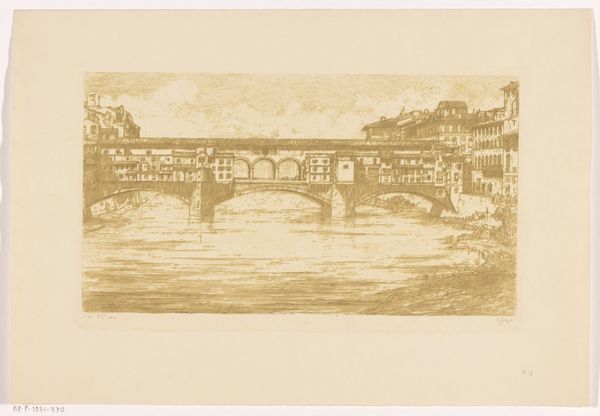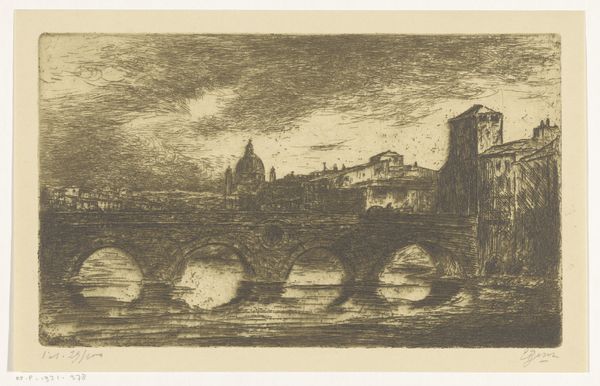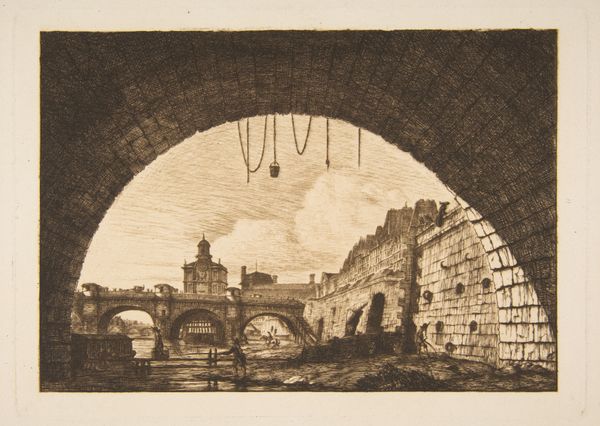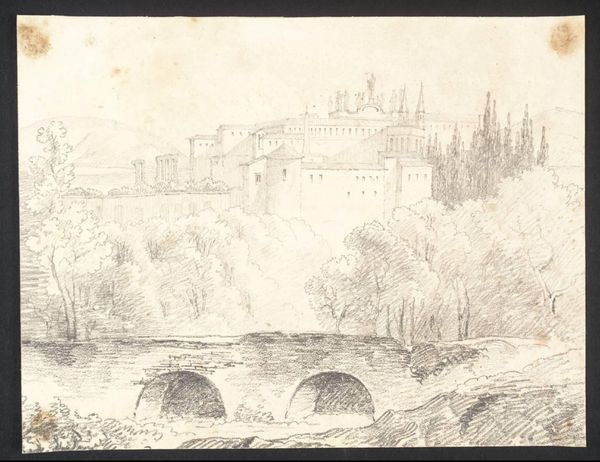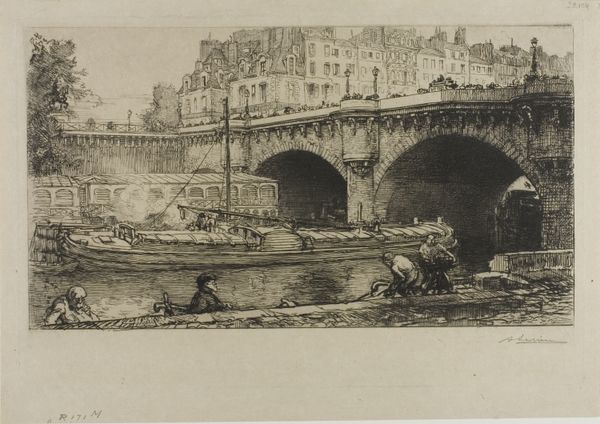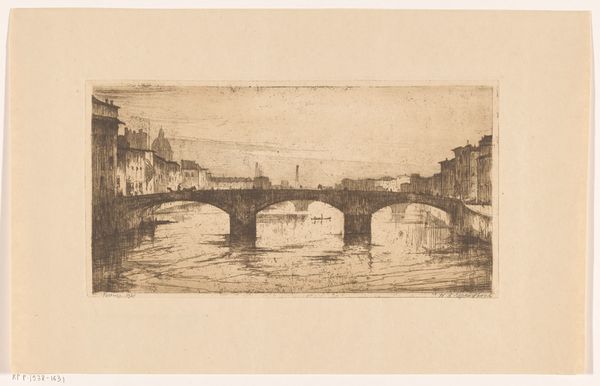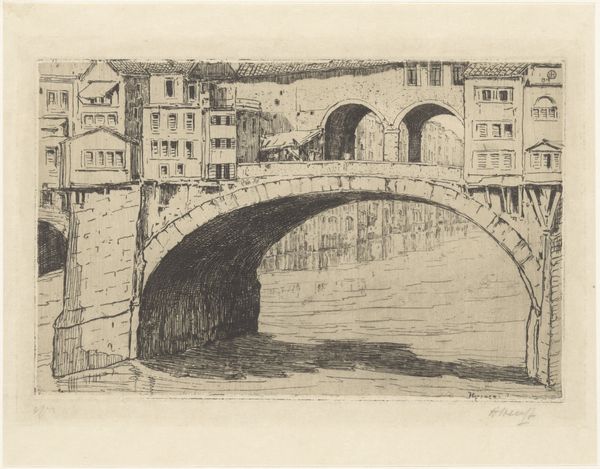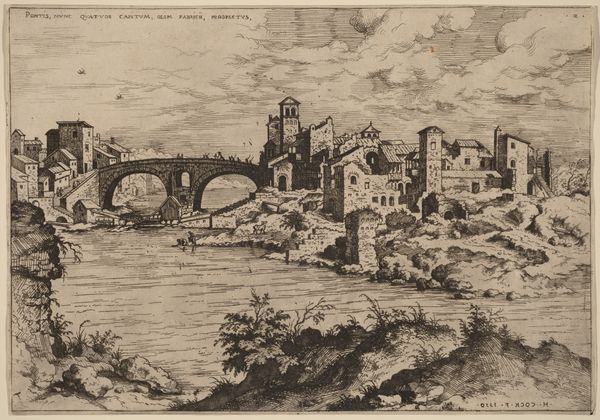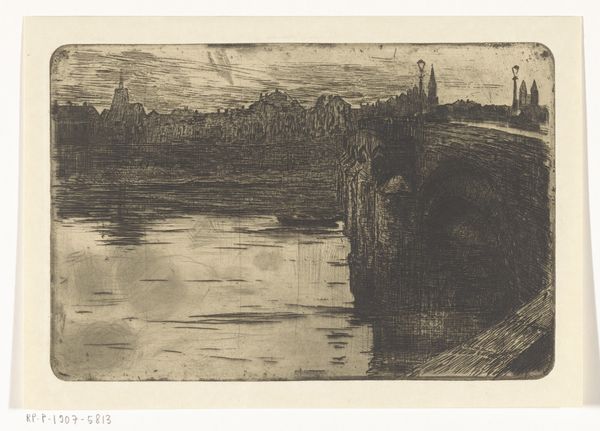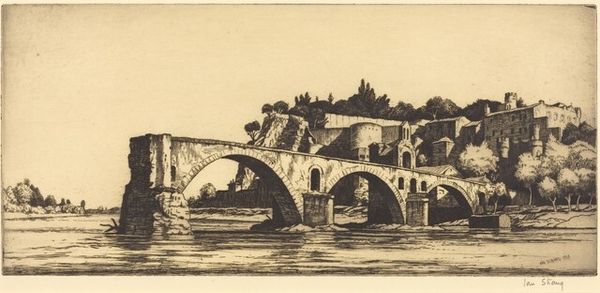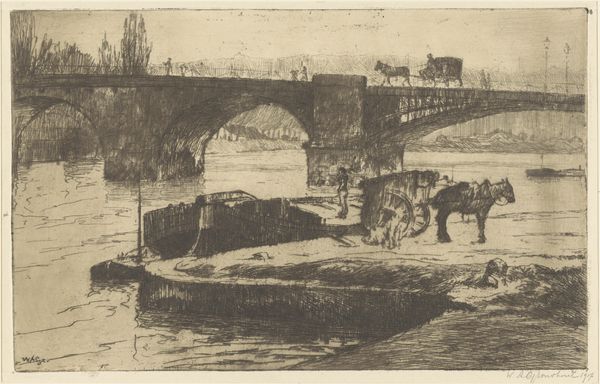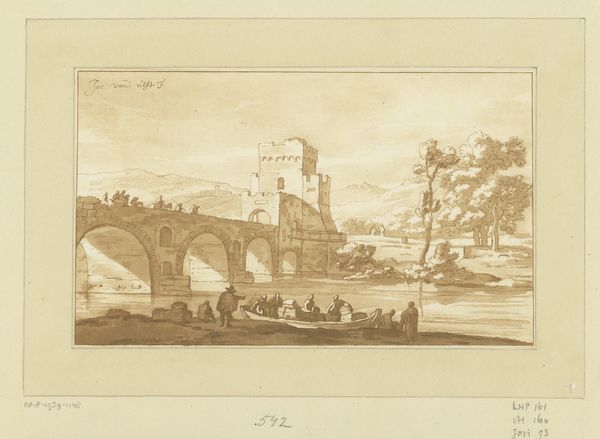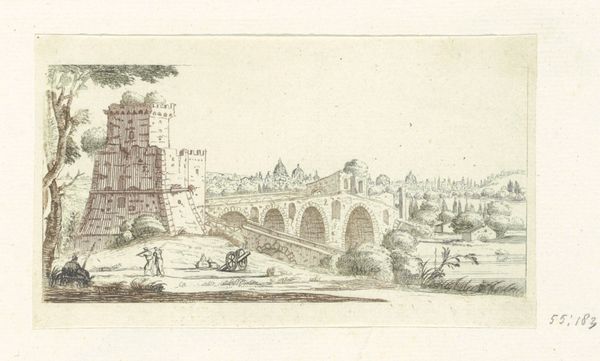
print, etching
# print
#
etching
#
landscape
#
etching
#
cityscape
#
history-painting
#
realism
Dimensions: height 278 mm, width 500 mm
Copyright: Rijks Museum: Open Domain
Curator: This print is titled "Brug in Rome," or "Bridge in Rome," dating sometime between 1873 and 1931, and is an etching. Editor: My first thought is quiet. It’s muted and delicate, like a memory faded at the edges. And so many layers...it invites the eye to wander. Curator: Considering that etching gained popularity during a period defined by socio-political upheaval, and its capacity to circulate ideas broadly through printed reproduction, do you think the muted aesthetic and detailed layering is communicating a wider socio-political commentary? Editor: Perhaps…but to me it feels more personal, more like an artist’s intimate reflection on a city that holds layers of history within its stones. The hazy atmosphere, the almost dreamlike quality...it reminds me of early photographs capturing the fleeting beauty of a moment. Curator: It is interesting that you speak about photography; etchings, as a medium, became crucial to democratizing visual culture as their relative ease of production created a closer analogue to photography. Consider the composition—the deliberate placing of architectural forms, the flow of people across the bridge, the inclusion of both nature and civilization...It makes me consider ideas of access, class, and perhaps even national identity as expressed during that time. Editor: Absolutely. But for me it comes back to atmosphere. It almost glows from within, like captured sunlight. The buildings aren't just buildings, they are living beings. Curator: And the bridge, as a symbol, is often interpreted as connecting different realms, linking past and present or even different cultures. How do you see that playing out here? Editor: In a way, it allows us to pause and observe. Perhaps inviting us to reflect not only on the grandeur of Rome but also our relationship to the weight and speed of the changing world surrounding that grandeur. Curator: Precisely. Through the lens of intersectionality, these considerations lead to questions regarding how history is not merely a record but an active dialogue with the present. The artist, whether consciously or not, embeds these inquiries within the visual language. Editor: You’re right. There are many ways in—like climbing onto that bridge. Each little line in the etching offering a different road in and different sights to see. I'm happy I made this journey. Curator: It serves as a profound visual statement, a complex nexus of cultural narrative, history, and personal contemplation that continues to resonate with contemporary issues today.
Comments
No comments
Be the first to comment and join the conversation on the ultimate creative platform.
